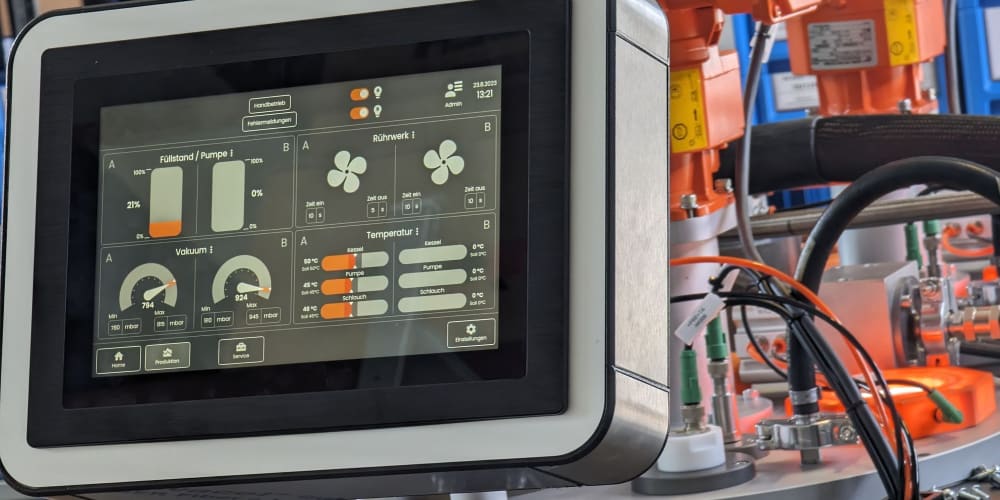Trading software is pivotal in today’s financial markets, providing traders with the tools they need to execute trades, analyze data, and manage their portfolios effectively. Whether you're a retail trader or a professional investor, the right trading software can significantly impact your trading success. This article explores the key features, types, and top platforms of trading software available today.
What is Trading Software?
Trading software is a type of application that enables traders to execute trades, analyze market data, and manage investments. These platforms range from simple tools for individual investors to advanced systems used by professional traders and financial institutions. They provide real-time data, technical analysis, order execution, and risk management features, making them essential for modern trading.Key Features of Trading Software
2.1. Real-Time Market Data
Real-time market data is a fundamental feature of trading software. It includes live quotes, price charts, and market news. Access to real-time data allows traders to make informed decisions and react quickly to market changes.
2.2. Technical Analysis Tools
Technical analysis tools help traders analyze market trends and make trading decisions based on historical price data. Features include charting tools, technical indicators (e.g., moving averages, RSI), and drawing tools for trend lines and patterns.
2.3. Order Execution
Efficient order execution is crucial for successful trading. Trading software provides various order types, including market orders, limit orders, and stop-loss orders. Some platforms also offer advanced order management features such as one-click trading and automated trading.
2.4. Risk Management
Risk management tools help traders manage and mitigate risks associated with trading. These features may include stop-loss orders, take-profit orders, and position sizing algorithms. Effective risk management helps prevent significant losses and protect capital.
2.5. Backtesting Capabilities
Backtesting allows traders to test their strategies against historical data to evaluate performance. Trading software with backtesting capabilities enables users to refine and optimize their strategies before deploying them in live trading.
- Types of Trading Software 3.1. Desktop Trading Platforms Desktop trading platforms are installed on a computer and offer a comprehensive suite of trading tools and features. They provide robust functionalities and are ideal for active traders who require advanced features and high-speed execution. Examples include MetaTrader 4/5 and TradeStation.
3.2. Web-Based Trading Platforms
Web-based trading platforms are accessed through a web browser and offer the convenience of trading from any device with an internet connection. They are typically user-friendly and provide essential trading features. Examples include WebTrader by various brokers and TradingView.
3.3. Mobile Trading Apps
Mobile trading apps allow traders to manage their investments and execute trades on the go. These apps offer core trading functionalities and real-time data access from smartphones and tablets. Examples include the mobile versions of MetaTrader and broker-specific apps like E*TRADE Mobile.
3.4. Algorithmic Trading Platforms
Algorithmic trading platforms are designed for automated trading using algorithms. These platforms support the development, testing, and execution of trading algorithms and strategies. Examples include QuantConnect and AlgoTrader.
- Popular Trading Software Platforms 4.1. MetaTrader 4/5 MetaTrader 4 (MT4) and MetaTrader 5 (MT5) are among the most popular trading platforms for forex and CFD trading. They offer extensive charting tools, technical indicators, and support for automated trading via Expert Advisors (EAs). MT5 includes additional features like multi-asset support and improved backtesting.
4.2. TradeStation
TradeStation provides a powerful trading platform with advanced charting, technical analysis tools, and custom strategy development through EasyLanguage. It is known for its robust backtesting capabilities and extensive data resources.
4.3. Thinkorswim
Thinkorswim, offered by TD Ameritrade, is a comprehensive trading platform with advanced charting tools, technical analysis, and real-time data. It supports equities, options, futures, and forex trading, making it a versatile choice for traders.
4.4. TradingView
TradingView is a web-based platform known for its user-friendly interface and powerful charting tools. It offers real-time data, social trading features, and a wide range of technical indicators. TradingView is popular among both retail and professional traders for its collaborative features and extensive charting capabilities.
Customizing Trading Software
Many trading platforms allow users to customize their experience by adding or removing features, creating custom indicators, and developing automated trading strategies. Customization options can enhance the trading experience and tailor the software to specific needs and preferences.Integration with Brokers
Trading software often integrates with brokerage accounts to facilitate trade execution. Integration ensures that trades are executed in real time based on the user's strategy and allows for seamless management of accounts and portfolios. Many platforms offer direct integration with major brokers, providing a smooth trading experience.Security and Data Protection
Security is a critical consideration when choosing trading software. Look for platforms that offer robust security measures such as encryption, secure login processes, and data protection features. Ensuring that your trading software and broker comply with industry security standards helps protect your personal and financial information.Future Trends in Trading Software
The future of trading software is likely to be shaped by advancements in artificial intelligence, machine learning, and big data analytics. These technologies will enable more sophisticated analysis, improved predictive models, and enhanced automation. Additionally, innovations such as blockchain and quantum computing may further transform trading software capabilities.Conclusion
Trading software is an essential tool for navigating the complexities of financial markets. With features ranging from real-time data and technical analysis to risk management and automated trading, these platforms offer traders the tools they need to succeed. As technology continues to advance, trading software will evolve, providing even more powerful tools and features to support traders in their investment journey.


















